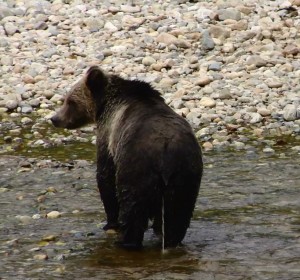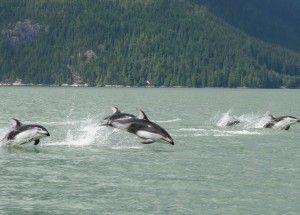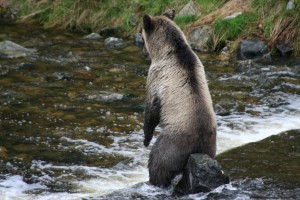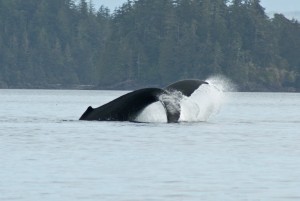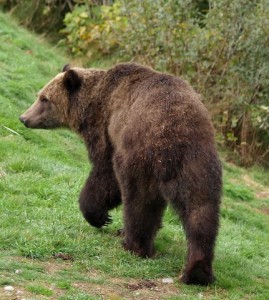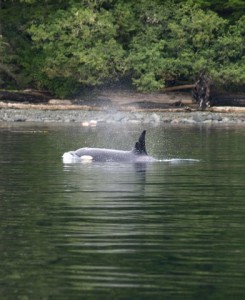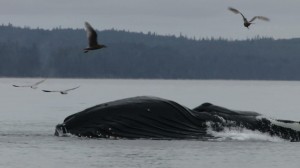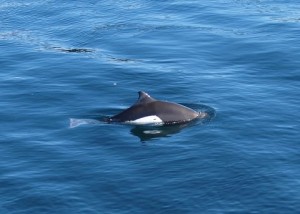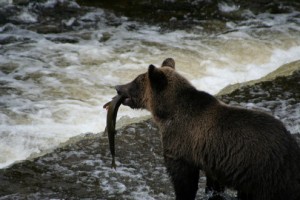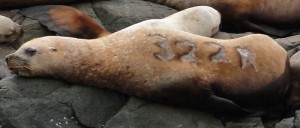
Steller sea lions often “haul out” on the rocks near Stubs Island located not far from Telegraph Cove on Vancouver Island. They pass through this area in the spring and fall traveling between California and Alaska. The sea lion numbers are on a decline along the West Coast of North America and a branding identification program has been underway for about fifteen years. “The two sites chosen to mark Steller pups were Pyramid Rock at Rogue Reef, Oregon and Southwest Seal Rock at St. George Reef in northern California. These sites are the largest Steller sea lion rookeries in the lower forty eight states. Steller sea lion pups were branded along the left flank. Sea lions branded at Rogue Reef, Oregon have a letter R following the numbered digit (i.e. 25R). Quote from Patrick J. Gearin
NOAA, AFSC, National marine Mammal Laboratory” Several of these branded sea lions are seen each summer and sightings are reported.
